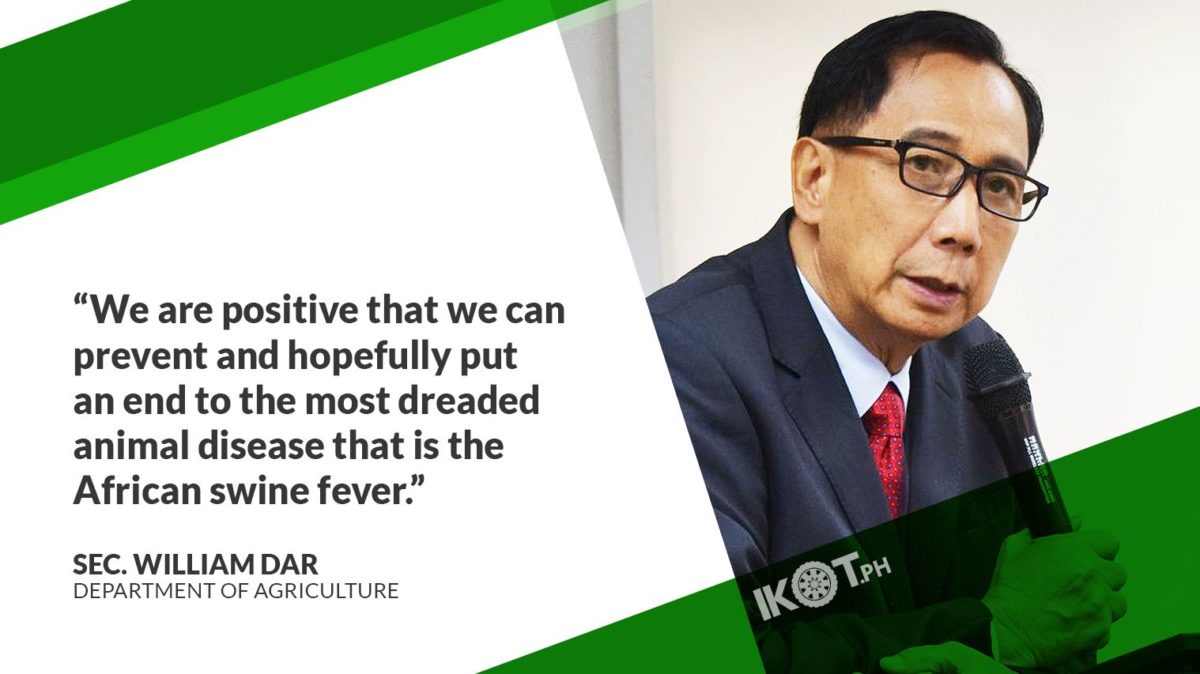To provide an accurate diagnosis of major animal diseases, prevent its spread, and ultimately protect the livestock and poultry industries in Central Luzon, a modern animal disease laboratory is now open for operation.
Located in Paraiso, Tarlac City, the Regional Animal Disease Diagnostic Laboratory (RADDL) aims to provide advanced service through modern technologies to ensure a healthy and resilient animal sector in the Region.
“The facility will help improve the measures against animal diseases that have often affected provinces in the region.”
According to Agriculture Secretary William Dar, the facility will help improve the measures against animal diseases that have often affected provinces in the region.
“Ang Gitnang Luzon po ay madalas na tamaan ng sakit ng mga hayop tulad na lamang ng foot and mouth disease o FMD na tumama noong dekada ’80,” Dar explained.
The agriculture chief added that the bird flu, which was discovered in San Luis, Pampanga in 2017 and in a quail farm in Jaen, Nueva Ecija early this year, was immediately detected and prevented because of the prompt action of the Bureau of Animal Industry and the Regional Field Office of the Department of Agriculture (DA).
“Now with this facility here, we are positive that we can prevent and hopefully put an end to the most dreaded animal disease that is the African swine fever (ASF) that has paralyzed the country’s hog industry for more than a year now, and has threatened to demolish the billion-peso industry,” the agriculture head explained.
“RADDL 3 could provide an accurate diagnosis of major animal diseases and enable the government to decide quickly on what to do.”
He added that RADDL 3 could provide an accurate diagnosis of major animal diseases and enable the government to decide quickly on what to do to prevent the further spread of any animal diseases here in Central Luzon.
“I call on our scientists and professionals working in the field of veterinary medicine to develop a vaccine for ASF through the power of science and technology,” Dar said.
The laboratory, funded by the United States Defense Threat Reduction Agency (US DTRA), provides services and tests needed for trade, disease surveillance, animal health, regulatory, and research. It will also serve as training facility for veterinary clinicians, students, and professionals.
At present, there are RADDLs in Region 2, Cebu, Cagayan De Oro, General Santos, and Davao.
According to DTRA Chief Major Brian Smith, the Tarlac laboratory is part of an integrated network of laboratories that aim to identify diseases or pathogens prior to them spreading throughout the region, identify them early, and help mitigate the risk before it spreads.
“It aims to promote biosafety and biosecurity culture in biological testing laboratories in the DA, serve as training ground for DA Biosafety Officers, lead in the research and development that will contribute to decision-making, policy development and regulations, and provide accurate laboratory data analysis for formulation of regulations and standards,” Smith.
During the event, Dar mentioned that the DA is set to establish a Transboundary Animal Diseases Center at the Central Luzon State University in the Science City of Muñoz, Nueva Ecija.
“This center, which will be replicated in every region, will be allocated P245 million under the Bayanihan to Recover as One Act or ‘Bayanihan 2’ that has just been signed by our beloved President Rodrigo Roa Duterte,” he said.
Dar added that the center would handle transboundary diseases such as African swine fever (ASF), avian flu, and other emerging animal diseases.
“We will connect these centers to other laboratories like the RADDL to protect the country’s poultry and livestock industries,” he added.

